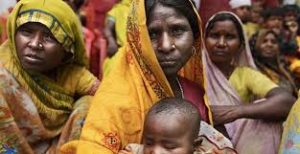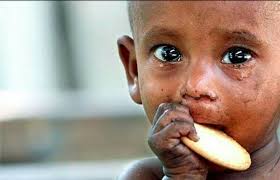 By Bizodisha Bureau, Bhubaneswar, March 30, 2023: The World Bank will lend $100 million loan to the frequently disaster-hit Odisha to strengthen its early forecasting systems for improved response to disasters and enhance its social protection coverage for poor and vulnerable households.
By Bizodisha Bureau, Bhubaneswar, March 30, 2023: The World Bank will lend $100 million loan to the frequently disaster-hit Odisha to strengthen its early forecasting systems for improved response to disasters and enhance its social protection coverage for poor and vulnerable households.
Over the course of the last century, coastal Odisha has been impacted by recurring disasters with a cyclone hitting the state’s coast once every 15 months. Due to its geographic location and associated meteorological conditions, Odisha is disproportionately affected by heavy rains, lightning, heat waves, flash flooding and the impact of hazards associated with climate change such as sea level rise.
Odisha is incurring Rs 3,000 crore of financial losses every year due to natural calamities such as floods, severe cyclones and droughts, according to an assessment by the World Bank.
The loan is being given under the “Odisha State Capability and Resilient Growth Programme” which covers the social protection delivery platform, strengthening the economics and statistics wing and enhancing the capacity for disaster resilience.
The program will help the Odisha government scale up existing social protection systems to better protect vulnerable households from climate shocks, said Auguste Tano Kouame, World Bank’s country director for India.
“The proposed engagement complements reform priorities identified by the Government of Odisha while building on the extensive program of technical assistance provided by World Bank to the state over the past decade.”
According to the officials of the state revenue and disaster management department, the program will support the development and the roll-out of a social protection delivery platform that will enable a citizen interface through multiple channels, including Citizen Service Centres. It will lead to the digitisation and integration of different scheme databases in improvements in the inclusion and exclusion of beneficiaries.
 The assessment also highlighted the plight of tribals in the state stating that the rate of poverty among the tribals in Odisha, 63%, is the highest in the country. Tackling poverty among tribals has been much slower than the statewide average, as evidenced by a poverty rate of 63% among tribal populations compared to 33% for the state overall.
The assessment also highlighted the plight of tribals in the state stating that the rate of poverty among the tribals in Odisha, 63%, is the highest in the country. Tackling poverty among tribals has been much slower than the statewide average, as evidenced by a poverty rate of 63% among tribal populations compared to 33% for the state overall.
“This discrepancy accounts in part for the disproportionate concentration of poverty in the south and west of the state where a large share of the tribal population resides it said,” while granting the loan.
Odisha’s human development indicators remain among the worst in India.
The bank’s technical assessment has found a discrepancy in poverty figures overall and among tribals accounts in part for the disproportionate concentration of poverty in the south and west of the state where a large share of the tribal population resides.
“Nearly one in three persons in the state is poor, and poverty reduction has been uneven across groups and regions. Poverty reduction among the tribals has been much slower than other groups,” the assessment said.
It said that Odisha has made remarkable progress in tackling infant mortality. At 44 deaths per 1,000 live births, the state’s infant mortality rate continues to be among the highest in the country. Malnutrition is high for the bottom 40% of households.
The assessment also found that despite the state executing a variety of social assistance and insurance programs including 198 state-financed schemes, 90 transfer benefits through cash, in-kind delivery and insurance contributions or livelihood support to individuals or targeted communities, investments in social protection and human capital development are fragmented within the state, and access continues to be a challenge for the most vulnerable.
“The multiple cash-transfer programs operate without an overarching policy or administrative co-ordination resulting in the duplication of administrative roles and costs. Schemes are characterized by fragmented beneficiary registers and poor linkages between beneficiary identification systems,” it said.
 It said while Odisha has made laudable progress in poverty reduction and outreach of several cash/food programs, the latest Centre for Monitoring Indian Economy (CMIE) data on social protection access in 2021 shows only 37% of all poor households receive both cash and food benefits.
It said while Odisha has made laudable progress in poverty reduction and outreach of several cash/food programs, the latest Centre for Monitoring Indian Economy (CMIE) data on social protection access in 2021 shows only 37% of all poor households receive both cash and food benefits.
The latest Periodic Labour Force Survey data released in 2022, shows 55% of workers in non-agricultural jobs are outside any social security net. The assessment found that the state government departments often operated as silos, resulting in the duplication of functions and poor integration.



Leave a Reply
Be the First to Comment!